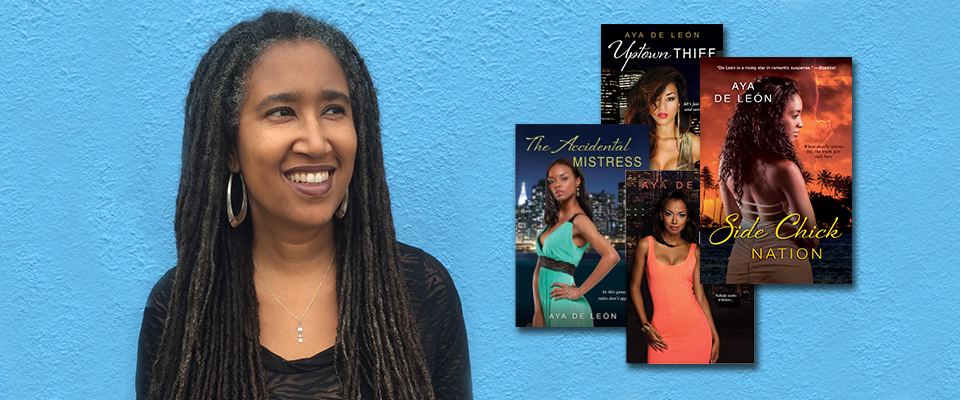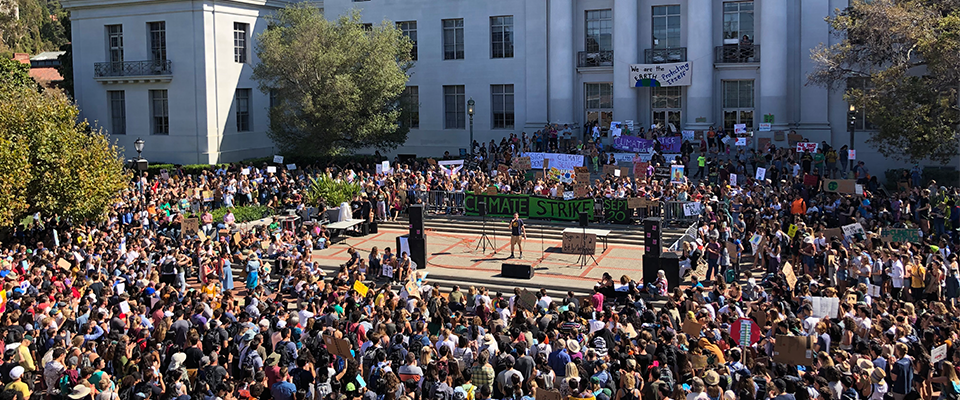By June of this year, the #MeToo movement had been bumped from both headlines and headspace by weird, convulsive, and disorienting stories—families separated at the border, trade wars erupting, regressive Supreme Court decisions, and intense and distracting hand-wringing over restaurant owners and patrons making mealtime awkward for members of the Trump administration.
As early wildfires erupted across California, on Capitol Hill the political landscape was obscured by smoke from brushfires now burning out of control after generations of congressional intransigence. Immigration legislation was, as it had been for years, stalled. Ditto health care reform. The only movement on climate change was coming from the climate.
How much women can accomplish, assuming they win their races, remains to be seen, but there is no question that women are seeking political office in record numbers.
It’s hard to remember a time when American politics was more toxic and dysfunctional, and it was queasily reminiscent of the newspaper industry about the time I’d left it ten years earlier, when significant numbers of women were moving into the upper echelons of editorial and administration just as the men, having presided over the near collapse of an entire industry, decided to move to more fertile fields.
It seemed like a peculiar time for me to begin pursuing a story on the Trump presidency and #MeToo movement’s resonating effect on the political fortunes of women running for office. But running they were, and in some ways that seemed even more peculiar. Women have long been hesitant to pursue a career in politics, and now it was less a job than a blood sport fought in an arena where there are three guys for every female. Why did any woman even want in? And what exactly was a person supposed to do with the mess she’d find?
A Democratic candidate for California lieutenant governor, Eleni Kounalakis, a graduate of UC Berkeley’s Haas School, sounded understandably a bit miffed at being asked that flippant question. Given that she’s the frontrunner for lieutenant governor, she is one of the women likely to inherit the said mess.
“Here in the United States, we are having a crisis in our democracy, and we should all take it very, very seriously,” she said, rather forcefully, implying that women need to run, not walk, toward public service.
“Wherever we are on the political spectrum, we all benefit from a stable and secure country,” she added. “The policies of Donald Trump seem to be intent on creating chaos. And the way that so many women are compelled to run is showing that they are not just going to sit back and let this happen.”
The #MeToo movement has underscored the magnitude of our national sexual harassment, discrimination, and abuse problem.
How much women can accomplish, assuming they win their races, remains to be seen, but there is no question that women are seeking political office in record numbers. And although this wave of candidates may not bring anything close to gender parity, the indicators are that a surge is coming.
It started a year after women donned their pink “pussy hats” to march in what Kounalakis describes as “the largest demonstration in the history of the world.” According to the Washington Post estimates, as many as 5.2 million U.S. women’s rights advocates in 653 locations took to the streets a day after Donald Trump’s inauguration.
As of this writing, on a national level, 36 women are running for the Senate, 301 are vying for House seats, and 28 are making a gubernatorial run. At present 107 women are in the U.S. Congress (23 in the Senate and 84 in the House), 6 are governors, and 67 hold other executive positions. So that’s quite a potential upswell, even given that some are incumbents.
There is no single factor motivating all these candidates, although health care and child care have been cited. Yet there is plenty of evidence to support that President Donald Trump’s policies, particularly those around immigrants, as well as controversies over both his manner and behavior with women, have spurred women to run.
Berkeley alum Bettina Duval, founder of The California Women’s List (formerly the CALIFORNIALIST), a political action committee that helps get Democratic women candidates elected, believes both the election of Trump and the #MeToo movement “have definitely energized women” to run, but each factor, she said, has had its own special effect.
President Trump, she said, represents an assault on women’s “right to, access to, and control of their own reproductive freedom.” And he has galvanized women concerned about “comparable pay for work, having a job opportunity, and not facing discrimination.”
California is pretty much in line with the rest of the country. “We have very poor representation of women in the legislature,” said Eleni Kounalakis.
As for #MeToo, “I think that what Harvey Weinstein and his behavior opened up wasn’t really as astounding to many as how widespread the sexual harassment was.” The #MeToo movement has underscored the magnitude of our national sexual harassment, discrimination, and abuse problem, much as victims of plague underscore the magnitude of a rodent problem.
For the former Governor of Michigan, Jennifer Granholm, graduate and now an adjunct professor at Berkeley and a political contributor to CNN, although #MeToo has empowered women to run, Trump’s campaigning and governing style have “made divisiveness a feature and not a bug of democracy. Women don’t want that,” she said. “They want to see people who are working to get things done.”
At present, Congress is roughly 80 percent male; 88 percent of the nation’s governors and 72 percent of its lieutenant governors are male. In state legislatures, men take 74.6 percent of the seats, and mayors are about 79 percent male. You get the drift.
California is pretty much in line with the rest of the country. “We have very poor representation of women in the legislature—I think it is about 27 out of 120 members of the Senate and the Assembly,” said Kounalakis. It’s currently at 30—all of 25 percent female representation. The state has also never elected a female governor or lieutenant governor, though Kounalakis is quick to point out that Mona Pasquil was appointed to the position and served for nearly six months. “We women can’t write each other out of history,” she said.
No, history generally takes care of that.
The last Year of the Woman in politics followed the spectacle, in 1991, of an all-male Senate panel grilling Anita Hill over her accusation that Supreme Court nominee Clarence Thomas had directed unwanted, sexually explicit attention at her when she had worked for him years earlier. In 1992, 24 women succeeded in getting elected to the House; and 6 went to the Senate, where there were already 3, conferring on America a whopping 9 women senators out of 100.
“There is a lot of scholarship suggesting that one of the primary barriers to getting more women elected is that it takes more to get women to run in the first place,” said Professor Sarah Anzia.
That predicted surge was more a flow, one that would soon ebb. In fact, by about 2000, the number of women elected had reached a plateau; and 2010 showed a decrease in female congressional representatives. The flow picked up again in 2012, following a string of attacks on women’s reproductive rights. (It would be hard to forget former Missouri congressman Todd Akin’s assertion that victims of “legitimate rape” can never get pregnant.) By 2013, women held 79 house seats and 20 senate seats.
Historically, women of all stripes have been reluctant to seek political office. When she ran for Michigan attorney general in the late 1990s, Granholm said, “I had to be invited to run. It needed to be pointed out to me how qualified I was.”
A few years later, when John Engler timed out due to term limits, “They came again and said ‘You have to run, you have an obligation, you have a duty to make sure we don’t allow the trajectory the state was on to continue,’” recalls Granholm. “So again, I had to be persuaded.”
Sarah Anzia is a political science professor at the Goldman School of Public Policy who is currently doing research on the relative fates of male and female candidates in California local elections. She explained, “There is a lot of scholarship suggesting that one of the primary barriers to getting more women elected is that it takes more to get women to run in the first place. They are socialized to be less competitive, and less inclined to think they are qualified to run for office.”
It’s an issue that drives candidate whisperers like Duval crazy. “Every woman, whether progressive, moderate, or conservative, has to figure out how to get power and that it’s OK to get that power. Because if women don’t give themselves permission to say OK, I need to be powerful … you are never going to be able to move your agenda forward.”
“Having a woman in office does something more than just promote women-friendly policies. It also allows for younger women or women thinking about running for office to have role models,” Anzia said
But what if all those agendas are in conflict with one another?
For the forthcoming election, besides the Trump and #MeToo effects, “the big difference is the degree of party polarization,” said Anzia. All that outrage and anger happening “mostly on the Democratic side,” she said, “is going to get more women elected on the Democratic side. But what is happening is the Republican Party—in terms of the proportion of women holding seats—has stagnated; it’s been flat for a very long time.” Indeed, 33 percent of Democratic candidates are women, but only 14 percent of Republican candidates are.
There is an uncomfortable reality for progressives, who see the election of more women and people of color as a means of getting progressive policies enacted: Female and minority candidates—and voters—can be moderate and conservative. In other words, even if every Democratic woman running were to earn her seat in Congress this year, they would still be looking across the aisles at female Republicans, and doing ideological battle with the women of Trump’s administration.
Then why do we need a lot more women? Does just being a woman bring some value to chambers of government that could move Congress out of the partisan-political mud that it’s presently stuck in?
“There is evidence to suggest very strongly that women elected to public office do pursue different issues, different legislation, different policies than men who share similar characteristics,” said Anzia.
And that can translate to bills on universal childcare, healthcare, and workplace discrimination, said Kounalakis. Women on both sides of the aisle, she said, “tend to be very focused on issues that matter to families and to working women.”
“The notion of overcoming something rather than walking in the shoes of privilege is a really powerful story for a huge swath of the population,” said Granholm.
“On top of that,” Anzia pointed out, “having a woman in office does something more than just promote women-friendly policies. It also allows for younger women or women thinking about running for office to have role models that demonstrate that they, too, can do this, and they, too, have a place in our government.”
By the end of June, women were back in the news in a big way. Supreme Court Justice Anthony Kennedy resigned, raising questions about the future of Roe v Wade.Then came the Bronx shake-up, when Alexandria Ocasio-Cortez, a young, Latina, self-described socialist, handily beat incumbent Representative Democrat Joe Crowley. And here in the Bay Area, London Breed became San Francisco’s first female African-American mayor.
Breed was not the only female minority candidate in that race; the others were Jane Kim, J.D. ’09, and Ellen Lee Zhou. Breed’s nearest rival in votes was Mark Leno, a former state senator and a gay man. And in a solidly blue city, she was not the bluest of the all-blue candidates.
“But London Breed’s story is extraordinary,” said Duval, by way of explanation for why Breed won.
“Her background is extraordinary,” echoed Kounalakis. “You know she grew up in the Western Addition; she grew up in a family that had very little. She worked hard and committed herself so fully to service that she has now emerged as a great leader.”
And from Granholm: “The notion of overcoming something rather than walking in the shoes of privilege is a really powerful story for a huge swath of the population, and that can include people of privilege.”
Such a story, obviously, can get a person elected. And if there are enough of those stories, told by women, not to mention people of color and members of the LGBTQ community, they can enlighten and ultimately influence the people sitting across the aisle, most of them white males, who have long held power.
“It does make a difference to have people who are impacted at the table,” explained Granholm. “When you are not even at the table at 50 percent, then the policy is different.”
Wendy Miller, editor emeritus of California, is an award-winning journalist who has no interest in running for office.





















